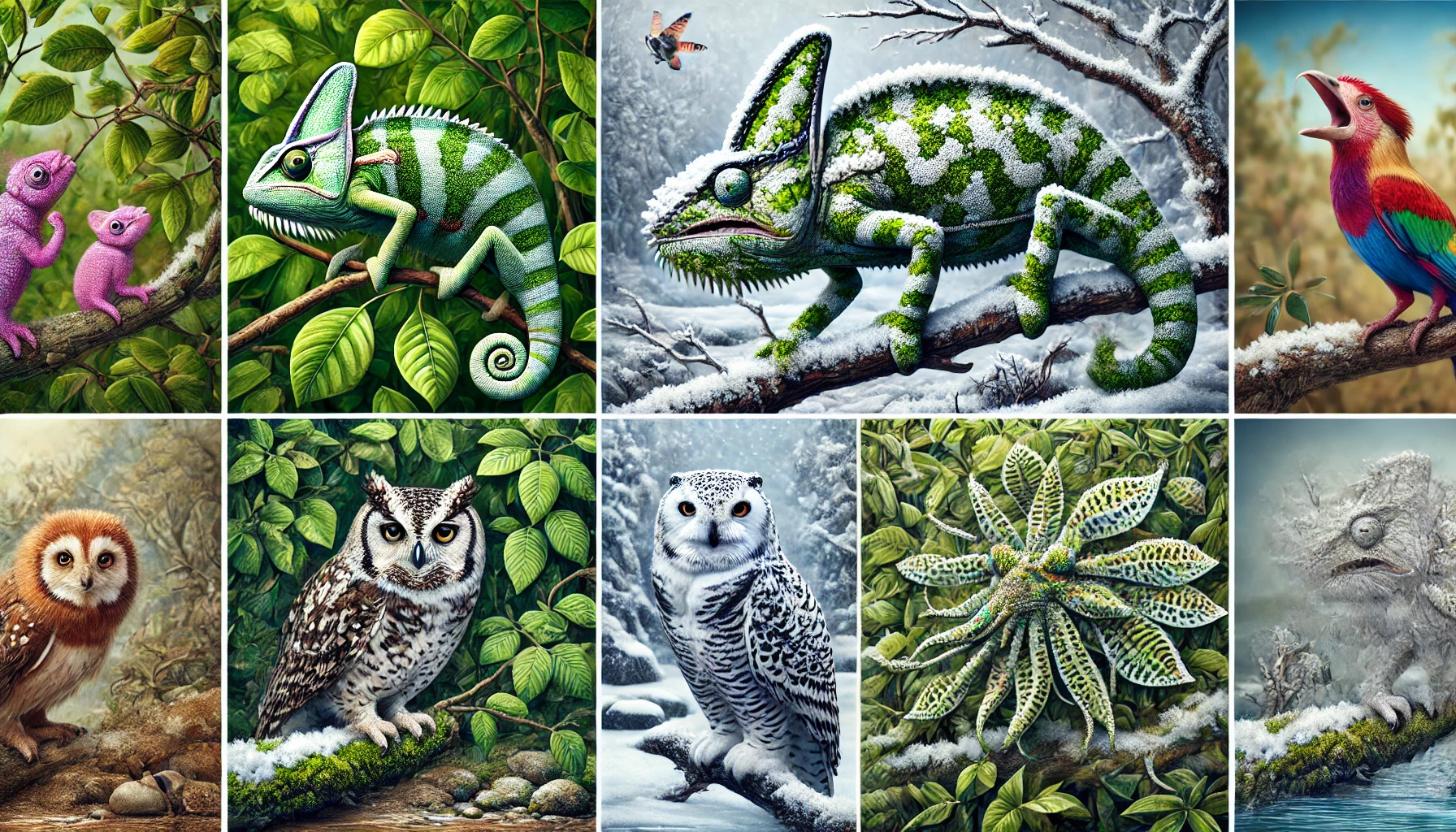5 Types of Camouflage Explained with Examples
Camouflage is a natural process by which animals (and sometimes plants) blend into their surroundings. In simple words, it is a survival strategy that allows camouflage animals to hide from predators or to sneak up on prey by matching the colours, patterns, or textures of their environment.

What are the 5 Types of Camouflage?
Concealing Colouration: Animals match the background colour of their environment. An Arctic hare, for instance, turns white in snowy conditions.
Disruptive Colouration: Bold patterns like stripes or spots break up an animal’s shape. Zebras’ stripes can confuse predators when they move in a herd.
Disguise: The creature looks like another object or organism, such as a leaf insect resembling a leaf or a stick insect mimicking a twig.
Mimicry: Animals impersonate other species’ looks, behaviours, or even odours, often to avoid predators. Certain butterflies mimic toxic species.
Countershading: An animal’s underside is lighter than its upper side, making it harder to detect under varying light conditions. Sharks often exhibit this trait.
12 Camouflage Animals Names and Examples
Below is a camouflage animals list showcasing various species that rely on blending into their surroundings:
Owl – Feathers match tree bark and surroundings.
Snow Leopard – Spotted fur helps it vanish among rocky terrain.
Seahorse – Can change colour and texture to match coral or sea plants.
Leaf-Tailed Gecko – Body shape and markings mimic leaves.
Stone Flounder – Lies flat on the ocean floor and adopts sandy colours.
Chameleon – Famous for changing skin pigments to suit its environment.
Stick Insect – Long, twig-like body blends seamlessly among branches.
Leopard – Rosette patterns offer disruptive colouration among dense foliage.
Frog – Many frogs match leaf litter or algae-laden ponds.
Katydid – Leaf-like wings hide it from predators in foliage.
Octopus – Uses specialised cells to shift skin colour and texture instantly.
Zebra – Bold stripes create a confusing visual mass when moving in groups.
Which Animal is Camouflage?
Actually, most of these species “use camouflage,” rather than “are camouflage.” One animal that represents camouflage iconically is the chameleon, often highlighted for its remarkable colour-changing ability.
How Do Animals Camouflage?
Camouflage animals rely on specialised cells (like chromatophores in octopuses) or fur, scales, and feathers that can change or reflect colours. Some use active camouflage, rapidly altering appearance; others depend on seasonal changes (e.g., Arctic hares). Each approach reduces visibility, making it tough for predators or prey to spot them.
What is Camouflage in Simple Words?
Camouflage meaning can be understood as an adaptation that enables an animal to become less visible—or even invisible—to others in its habitat. This usually involves changes in colour, pattern, or shape.
Quick Quiz (With Answers)
1. Question: Which animal from the list can alter both colour and skin texture?
Answer: The octopus can change its colour and surface texture.
2. Question: What are the 5 types of camouflage?
Answer: Concealing Colouration, Disruptive Colouration, Disguise, Mimicry, and Countershading.
3. Question: Which animal from the list displays disruptive colouration?
Answer: Zebras, with their stripe patterns, exemplify disruptive colouration.
Related Topics


FAQs on How Animals Use Camouflage to Survive
1: What animal represents camouflage?
Chameleons are often viewed as the ultimate symbol of camouflage due to their rapid colour-changing ability.
2: Can camouflage animals change texture as well as colour?
Yes. Species like the octopus can modify both skin colour and texture, making their camouflage exceptionally effective.
3: Are there camouflage animals examples in plants?
Yes, certain plants mimic leaves or stems to avoid being eaten. However, camouflage is generally more associated with animals.
4: What are the common uses of camouflage among animals?
Mainly for protection against predators and to hunt prey more effectively by ambush.










